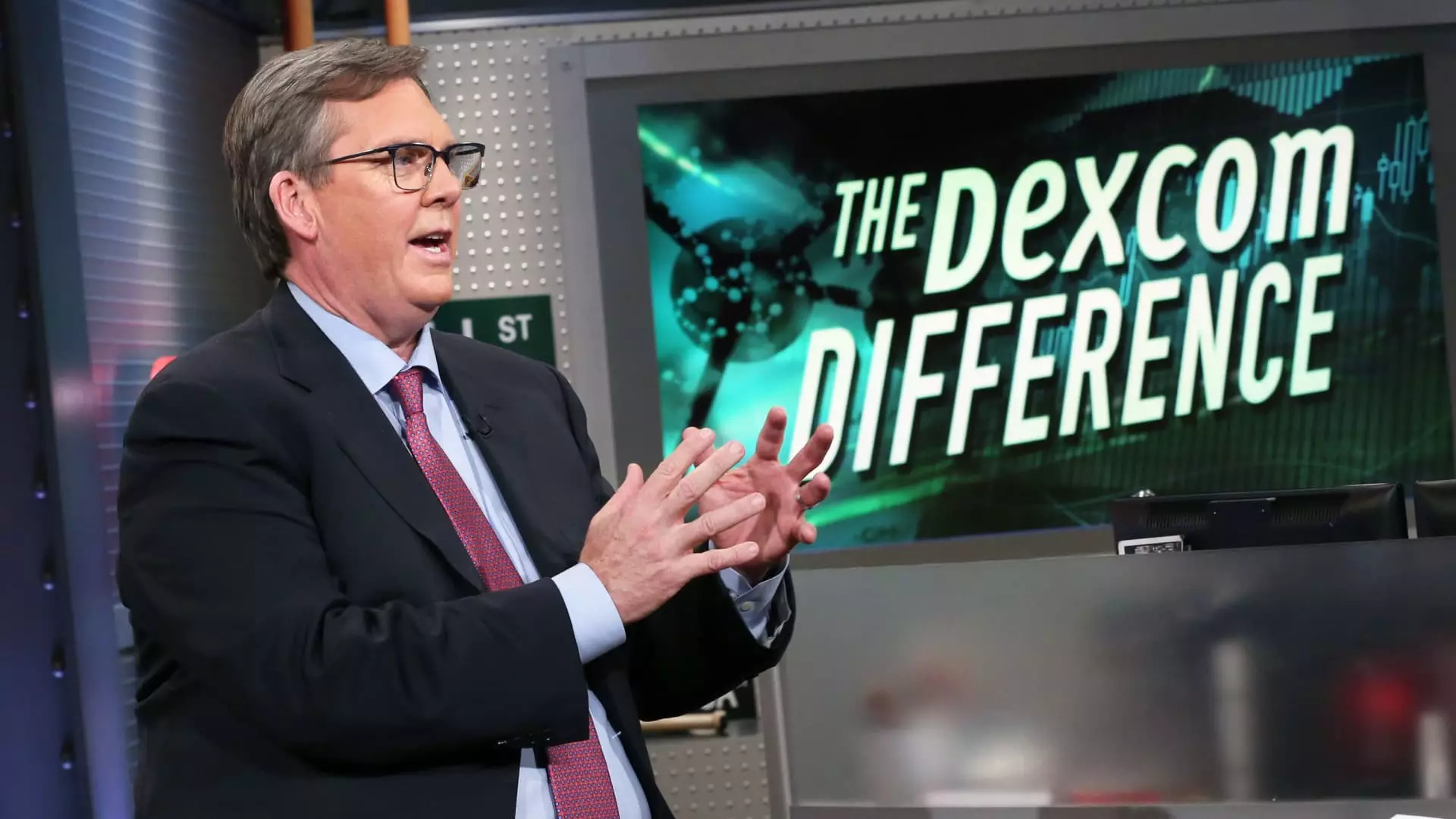Dexcom, renowned for its innovative diabetes management solutions, faced a significant setback as its shares plummeted 9% in after-hours trading following the release of its third-quarter financial results. Despite the company’s earnings surpassing analysts’ expectations, the market responded negatively primarily due to a year-over-year drop in U.S. revenue. This paradox highlights the volatility often associated with investor sentiments, which can be driven more by context than by raw numbers.
Dexcom reported adjusted earnings per share of 45 cents, marginally exceeding analysts’ anticipated 43 cents, alongside a revenue figure of $994 million—slightly above the expected $990 million. While these metrics demonstrate the company’s ability to generate earnings, a deeper examination reveals a troubling trend. The total revenue inched up by 2% compared to the previous year; however, the critical U.S. revenue declined 2% from $713.6 million in the same quarter last year. This drop raises concerns about the domestic market’s performance amidst a landscape often characterized by growing diabetes prevalence.
The decline in U.S. revenue is particularly disheartening given Dexcom’s reputation as a leader in continuous glucose monitoring (CGM) technology. CEO Kevin Sayer pointed to multiple factors contributing to the decline, including a restructuring of the sales team and fewer new customer acquisitions than anticipated. These strategic shifts, while necessary for long-term sustainability, may initially disrupt operations and customer engagement—a reality investors may have overlooked during their evaluations.
In August, Dexcom had launched its first over-the-counter product, Stelo, targeting a broader audience who do not require insulin. This move could indicate a refreshing approach to expanding revenue streams, yet its instantaneous impact remains unquantified in the short term. The combination of an innovative product and infrastructural changes presents a complex narrative that requires careful monitoring.
Future projections do not paint a clearly rosy picture either. While Dexcom maintained its full-year revenue guidance between $4 billion to $4.05 billion, this marks a reduction from an earlier forecast of $4.20 billion to $4.35 billion made in the first quarter. Such revisions, particularly based on previous performance, raise questions about the company’s ability to rebound effectively and its capacity to revive investor confidence.
Additionally, the announcement of Teri Lawver’s impending retirement as chief commercial officer adds another layer of uncertainty. Changes in leadership often come with strategic shifts that can further impact operational stability. Until a replacement is identified, Sayer’s dual role may lead to challenges in maintaining momentum in both sales execution and broader company strategy.
Dexcom’s recent quarterly performance showcases a mixture of strong earnings against a backdrop of declining U.S. revenues. As the company navigates a transitional phase, it holds the potential for recovery through innovative product launches and restructuring efforts. However, investors will undoubtedly be watching closely for signs of stability and growth in an increasingly competitive health tech sector. Ultimately, the company stands at a crossroads, tasked with reclaiming investor trust while sighting opportunities for advancement in its mission to manage diabetes effectively.

